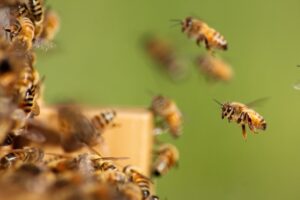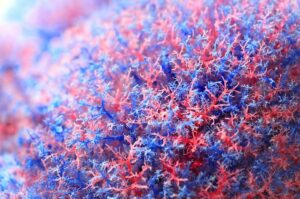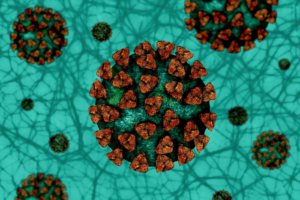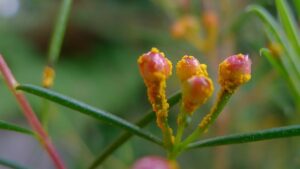Enter your address to receive notifications about new posts to your email.
Science & Publishing
-
Science & Publishing
Honey bee social behaviors and the long hunt for genetic factors
Researchers used a forward genetic approach to identify genes that affect a social behavior in honey bees. For more than 30 years, honey bee geneticist Robert E. Page, Jr. and his colleagues have sought the genes that influence a colony trait that only emerges from interactions between thousands of individual bees — a social phenotype.…
-
Science & Publishing
Mapping complex traits in hemp
Researchers identified dozens of quantitative trait loci controlling important traits in Cannabis sativa. In 2014, United States federal law changed to allow scientific research on Cannabis sativa in states with regulated hemp programs. This legal shift opened the door to research that had previously been slow and difficult due to regulatory hurdles and funding challenges. A new study published…
-
Science & Publishing
Naturally occurring small molecules correct mutant proteins in living cells
Yeast screens explore the therapeutic potential of chemical rescue. Anyone who’s worked in a lab knows that sinking feeling of discovering that the temperature of an incubator, carefully set the night before, has crept up high enough to ruin the experiment. While such a mishap usually spells disaster, occasionally, it can lead to an unexpected…
-
Science & Publishing
How an anti-fungal medication can stop new blood vessel formation
Discovery of thiabendazole target explains vascular disrupting action. Even after hundreds of millions of years of evolution, some yeast genes persist mostly intact in humans and other vertebrates. Despite the huge differences between yeast and humans, these genes perform the same molecular function in both organisms but have been adapted over time into new contexts.…
-
Science & Publishing
GENETICS welcomes new Associate Editor
We are pleased to announce the appointment of Laura Rusche as a new member of the GENETICS Editorial Board in the Gene Expression section. Laura Rusche Laura Rusche is an Associate Professor of Biological Sciences at the University at Buffalo (SUNY). She studies chromatin proteins in an evolutionary context. Rusche earned a BS in Molecular…
-
Science & Publishing
100 years since the medaka’s international debut: Aida’s legacy
From a Kyoto garden to scientific discoveries. Since the 17th century, medaka fish have been bred for their beautiful colors. Shortly after the 1900 re-discovery of Mendel’s laws of inheritance, medaka began to be used for genetic studies. Recessive inheritance of the orange-red (b) and white (r) variants, female-limited appearance of the white phenotype, and an…
-
Science & Publishing
NUKUs: A new primate retrocopy family with distinct functionality
Multiple divergent retrocopies of the well-characterized Ku70 gene were identified in humans and other primates. The last 63 million years of primate evolution have been strongly shaped by genetic retrotransposition; thousands of genes and proteins with new functions have evolved from retrocopies scattered throughout the genome. These retrocopies arise when retrotransposons reverse transcribe a cellular…
-
Science & Publishing
Uncovering SARS-CoV-2 recombination events
New Bolotie method can handle the barrage of sequencing data that posed a problem for conventional recombination algorithms. Humanity has faced many pandemics throughout history, but never before have we tackled an active pandemic while so well equipped with genetic technology. In fact, when SARS-CoV-2 struck, the genetics community produced so much sequencing data so…
-
Science & Publishing
Finding a happy medium boosts ChIP-seq data quality
Every lab wants to produce high-quality, reproducible data. But when that data is destined for use by the whole community as part of an international consortium, there is an even greater incentive to ensure the highest standards. A new paper in G3: Genes|Genomes|Genetics defines a critical step for the success of widely-used gene regulation experiments. …
-
Science & Publishing
New Senior Editors at GENETICS and G3
GENETICS and G3: Genes|Genomes|Genetics are pleased to announce two new Senior Editors; Sharon Browning is a Senior Editor at GENETICS, and Gustavo de los Campos is a Senior Editor at G3. GENETICS Sharon Browning Sharon Browning is a Professor of Biostatistics at the University of Washington. She received a BS in Mathematics from the University of…
-
Science & Publishing
The myrtle rust genome is the largest assembled fungal genome to date
Over 90 percent of the genome of this pathogen threatening Australian ecosystems is made of transposable elements. Myrtle rust (Austropuccinia psidii) is a pathogenic fungus that has spread rapidly across the globe with devastating effects on local vegetation, including agricultural crops. It is extremely versatile, with over 480 known host species in the widespread myrtle…












